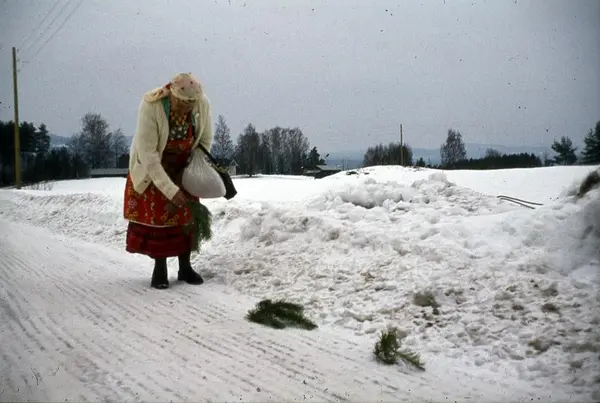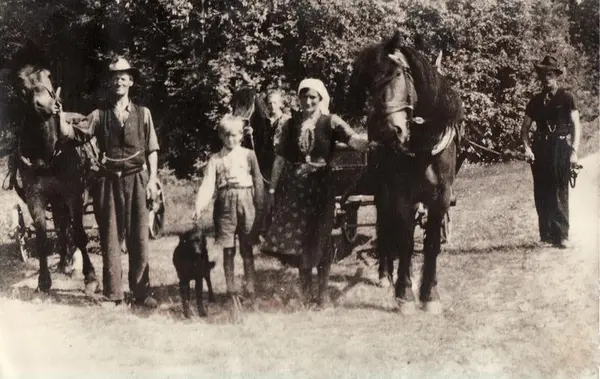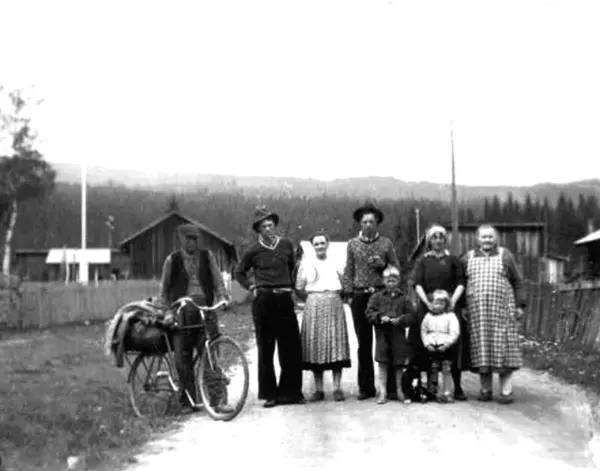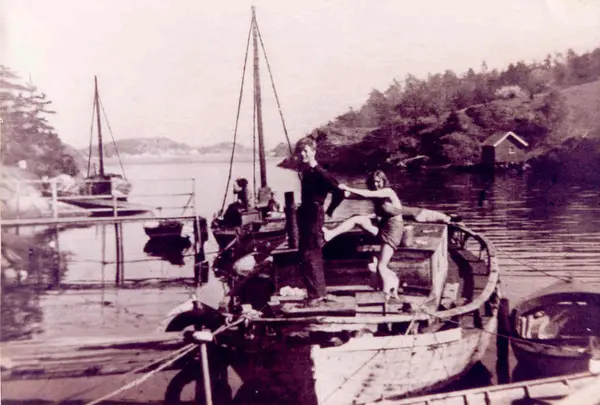- 1/1
Milla places branches as signs for other Travelers. Ca. 1973. Foto: Dagfinn Grønoset / Anno Glomdalsmuseet
The sign was called a patrijal or mark. The patrijal was made by laying twigs and stones on the right side of the road in the direction of travel.
Three twigs and a rock on the right side of the road at an intersection meant that other Travellers had gone in that direction. The sign meant, according to Marie Lovinie Oliversen, that someone had just gone past and that they would like visitors! (Møller 1974).
Another sign was the gåning. Gåning means sack or bag. The sign, which would also be placed on the right side of the road, was made in the snow using a riding whip. It would consist of lines, with small bags or round figures indicating when the Travellers had gone past. The number of gånings would correspond with the number of adult Travellers (Ribsskog 1945).
A figure placed in the centre of the gåning meant that the travelling family had gone past on a Sunday, whereas three markings on the left side of the bag opening would signify that they had gone past on one of the first days of the week. If the figure was on the right side of the opening, that would mean they had gone past sometime after the three first days of the week.




